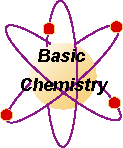Indicator and pH Measurement Lab
Purpose:
pH is a measurement of the hydrogen ion (H+) concentration in relation to the hydroxide ion (OH-) concentration. Around the value of zero you have a strong acid or one that dissociates almost completely. At a value of around fourteen you have a base that dissociates almost completely. At pH 7 the solution is neutral, which means the amount of acid is equal to the amount of base. Pure water is pH 7 because it forms equal numbers of ions of hydrogen and hydroxide. To determine if something is acid or base we may use indicators that change colors at certain pH's. A combination of indicators make up what is called the "universal indicator". In addition, there are some natural indicators that you can make from tea, red cabbage (boil the leaves and water together until a dark purple color develops), radish skin (same as cabbage) and grape juice that is diluted according to the label.
Materials:
- eyedropper
- indicator
- depression plates
- acids and bases of a known strength (molarity).
- distilled water
Procedure:
- Wash and rinse the depression plate with soap and water.
- Rinse the depression plate again but this time with distilled water.
- Clean two eyedroppers the way you did the depression plate. Label one eyedropper acid and the other is labelled base. They must be rinsed each time with distilled water before testing another acid or base.
- Dry the depression plate.
- Put one drop of indicator into each depression.
- In depression 7 put 7 drops of distilled water using a cleaned eyedropper (either one). Then using the acid eyedropper put 7 drops of the weakest acid in depression 6 followed by stronger acids heading toward the number 1. Using the base eyedropper put 7 drops of the weakest base in depression 8 followed by progressively stronger ones toward 14.
Data:
- Record the colors for all pH's with each indicator.
- Determine the range (where the color changes) for each indicator.
Conclusion:
- Compare experimental ranges with the accepted ranges in the conclusion.
- What does a positive change of one on the pH scale mean as far as the concentration of hydrogen and hydroxide ions?
- What are the limitations of an indicator and how can this be overcome?
- How do pH meters work and how are they calibrated?
Back to top
pH is a measurement of the hydrogen ion (H+) concentration in relation to the hydroxide ion (OH-) concentration. Around the value of zero you have a strong acid or one that dissociates almost completely. At a value of around fourteen you have a base that dissociates almost completely. At pH 7 the solution is neutral, which means the amount of acid is equal to the amount of base. Pure water is pH 7 because it forms equal numbers of ions of hydrogen and hydroxide. To determine if something is acid or base we may use indicators that change colors at certain pH's. A combination of indicators make up what is called the "universal indicator". In addition, there are some natural indicators that you can make from tea, red cabbage (boil the leaves and water together until a dark purple color develops), radish skin (same as cabbage) and grape juice that is diluted according to the label.
- Wash and rinse the depression plate with soap and water.
- Rinse the depression plate again but this time with distilled water.
- Clean two eyedroppers the way you did the depression plate. Label one eyedropper acid and the other is labelled base. They must be rinsed each time with distilled water before testing another acid or base.
- Dry the depression plate.
- Put one drop of indicator into each depression.
- In depression 7 put 7 drops of distilled water using a cleaned eyedropper (either one). Then using the acid eyedropper put 7 drops of the weakest acid in depression 6 followed by stronger acids heading toward the number 1. Using the base eyedropper put 7 drops of the weakest base in depression 8 followed by progressively stronger ones toward 14.
- Record the colors for all pH's with each indicator.
- Determine the range (where the color changes) for each indicator.
Conclusion:
- Compare experimental ranges with the accepted ranges in the conclusion.
- What does a positive change of one on the pH scale mean as far as the concentration of hydrogen and hydroxide ions?
- What are the limitations of an indicator and how can this be overcome?
- How do pH meters work and how are they calibrated?


